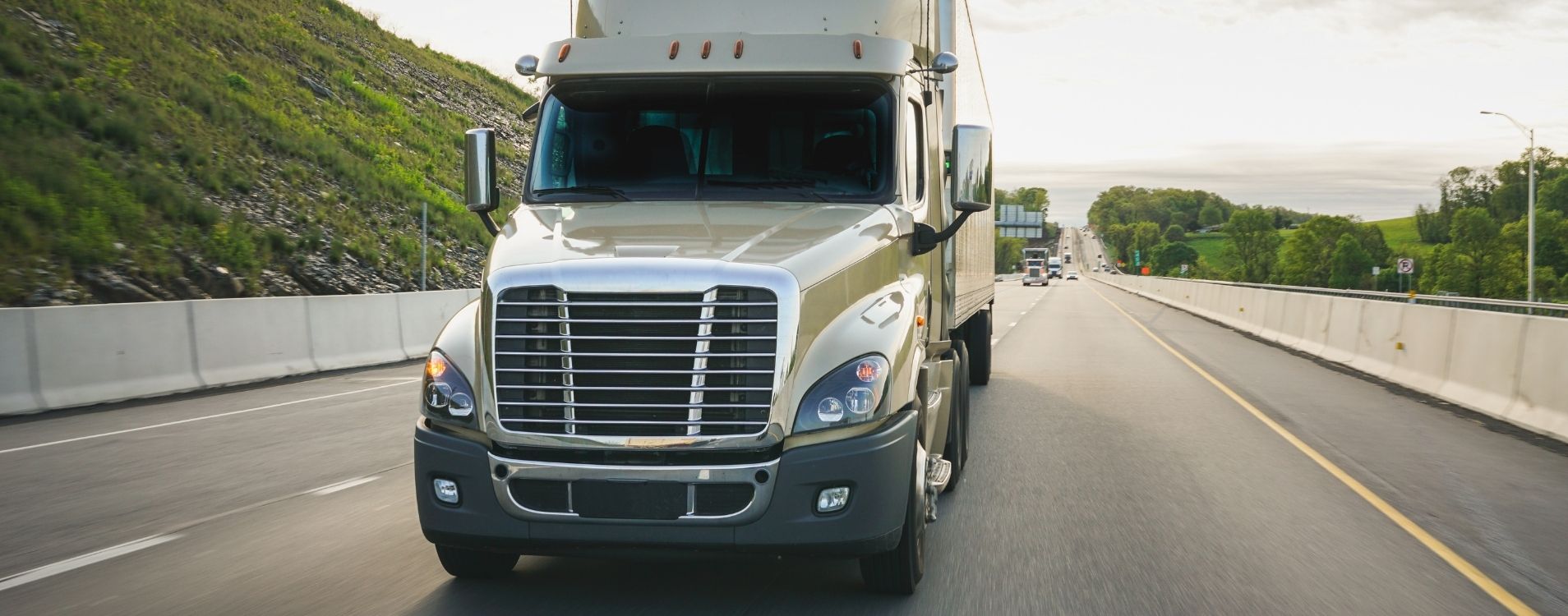Low Down Payment Semi Trucks: A Path Toward Purchase
We won’t sugarcoat it: Purchasing a semi truck is a heavy financial lift. Don’t expect to buy new for less than $100,000—and depending on the features you need, the price will probably be a lot higher. Even with lender financing, you’ll need a down payment that could range from 10% all the way up to 40% for buyers without the best credit. For a $200,000 truck, that’s $20,000 to $80,000 upfront.
Where does that leave the aspiring owner-operator without deep pockets?
The same place as any new business owner trying to build something from nothing: In need of a good growth strategy. The bad news is you’ll need some capital to get into the trucking business; it’s probably not feasible to get started without at least $5,000 to $10,000 in initial funding.
The good news is that, with a combination of step-wise growth and low down-payment semi truck financing, you can work toward full ownership while simultaneously growing your business. Here’s a step-by-step path to buying your own semi truck—with or without semi truck down payment assistance.
Looking for an easy way to maintain cash flow while you build capital toward your first semi truck purchase? Factoring with Bobtail can help. Call us at 410-204-2084 to learn more.
1. Start your business with a rental truck.
Even if your goal is to buy a semi truck, don’t rule out rentals as an initial step in the process. Commercial truck rental companies like Penske and Ryder may ask for a deposit of a few thousand dollars, so you’ll need a little upfront capital. Deposits on semi truck rentals are usually between one and a half to three times the monthly rental rate—typically much less than a down payment. But that deposit is still your cash. As long as everything goes smoothly with the rental, you’ll get that money back.
The advantage of renting is that it can help you start your business (almost) from scratch, even if you’re just driving on the weekends. Your goal is to raise the $5,000 to $10,000 that will get your business to the next step. Make a 90-day business plan, factoring in your rental costs, to start showing proof of profit.
You’ll probably have to charge higher per-mile or daily rates at this stage of the business, but that’s temporary. When you start building a track record of business success, you’ll find it easier to obtain financing when it’s time to buy. In the meantime, you’ll start raising the capital you need to take your trucking business to the next level: Leasing equipment.
2. Move on to a leasing agreement.
The very companies that rent commercial trucks also lease them. Once you start to show business growth, your rental partner will probably be happy to put you in touch with their leasing agents. So what’s the difference between renting and leasing a truck?
Rental is short-term. You pay more, on an hour-by-hour basis, for a rental than a lease. Leasing is longer-term—often five or six years at a time—and more affordable than renting in the long run. When you lease a semi truck, you typically also bundle in service and maintenance on that equipment—which makes leasing a much simpler way to operate a trucking business than buying, at least in the early days (and some carriers prefer to lease indefinitely).
Security deposits are higher for leases than rentals: This is where the $5,000 to $10,000 estimate comes into play. But like rentals, you can get that deposit back when you decide to move from leasing to owning. At any rate, leasing gives you reliable access to the key assets you need to grow your business, and will allow you to accumulate the capital you need to finally make the leap into owning your own truck—a cost you can control by seeking out low down payment semi truck financing.
3. Research low down payment semi truck financing options.
A semi truck is a business asset, no different, in principle, from a manufacturer’s production line or a real estate magnate’s properties. That makes financing a truck similar to finding any business loan—which means semi truck down payment assistance may be available in your area.
You have a few options for financing your rig purchase:
- Dealer financing. Commercial truck dealers may offer low (and even no) down payment options for purchasing a truck. But be careful; as a general rule of thumb, the less you put down upfront, the more you’ll pay over the term of your loan. Dealers may charge interest rates up to 40% on a seven-year loan—and you’ll usually pay less overall if you stick with leasing until you build up a larger down payment.
- Bank business loans. Many big-name banks offer business loans for commercial vehicles, and rates can be quite competitive—although you’ll pay the least for financing if you have really good credit and a proven track record of business success. Check out commercial vehicle loan programs from Wells Fargo, US Bank, and Bank of America to compare rates.
- Small Business Administration (SBA) loans. The federal SBA matches lenders with commercial buyers. The SBA microloan program provides funding of up to $50,000, which could help with a truck down payment. For the full purchase price of a semi truck, look into SBA 7 (a) loans, which limit fees and interest rates.
Other places to look for information on truck funding include industry associations like the Owner Operator Independent Drivers Association (OOIDA), trucking conferences, and even your local chamber of commerce.
With funding in place, you’re ready to buy. For more advice on purchasing your first semi truck, see our coverage of the topic here. But to keep making payments on essential trucking equipment, you’ll also need a plan to maintain consistent cash flow—which is not as simple as lining up steady work.
Maintaining Cash Flow For Semi Truck Payments
Sending an invoice is not the same thing as getting paid. In the trucking industry, shippers and brokers may hold onto your invoices for weeks, or even months, before paying them. If you have a truck note coming due, that doesn’t help; you need cash to meet your expenses.
If you find yourself in the position of being business-rich but cash poor, consider factoring your invoices. Factoring is a financial service in which a third party pays trucking companies what they’re owed immediately. Then they collect those funds from the shipper or broker when the invoice comes due.
So how do factoring companies make money? That depends on the provider. Most charge a raft of hidden fees alongside a percentage of the invoice value. Bobtail is different.
We collect a simple, single factoring fee—just 1.99% to 3.24%, depending on the size of your business. Bobtail doesn’t lock you into contracts. We don’t charge hidden fees. And there’s never any volume requirement, so you can factor one invoice and collect the next directly from your customer; it’s up to you.
The Bobtail factoring app was developed by truckers, for truckers, so it’s built to make your working life easier. Just enter load details, rate confirmation, and your bill of ladings and get paid as quickly as that day. Finding low down payment semi trucks to buy is just the beginning; to keep your business growing, keep the cash flowing with Bobtail.
Sign up to learn more about the Bobtail app today.




